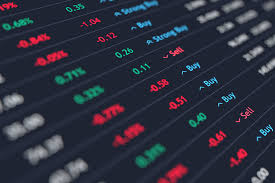Asian stocks weaken ahead of U.S. CPI, bonds remain on edge

Asian stocks followed Wall Street lower and crude oil stayed weak on Thursday as investors weighed the risks of global recession amid hawkish Federal Reserve rhetoric and uncertainty about the Bank of England’s commitment to stabilising markets.
The dollar held its ground against major peers and bond yields edged higher as traders awaited U.S. consumer price data that could shed light on the pace of further Fed policy tightening.
Japan’s Nikkei (.N225) slipped 0.48%, while South Korea’s Kospi (.KS11) slid 1.15%.
Hong Kong’s Hang Seng (.HSI) dropped 1%, and mainland Chinese blue chips (.CSI300) lost 0.28%.
MSCI’s broadest index of Asia-Pacific shares (.MIAP00000PUS) lost 0.57%, languishing close to Wednesday’s 2 1/2-year low.
UK FTSE futures pointed to a 0.18% decline at the open, and German DAX futures signaled a 0.35% retreat.
U.S. emini stock futures offered some slight hope though, rising 0.1% following a 0.33% decline in the S&P 500 (.SPX) from overnight.
“I’m more concerned than I’ve been for some time,” said Tom Nash, a fixed income portfolio manager at UBS Asset Management in Sydney.
“The risk of an over-tightening episode and some mishap in financial markets is higher than I can remember.”
Minutes of the Fed’s latest policy meeting released Wednesday showed many officials “emphasized the cost of taking too little action to bring down inflation likely outweighed the cost of taking too much action,” although several committee members said it would be important to “calibrate” the pace of further rate hikes to reduce the risk of “significant adverse effects” on the economy.
Treasury yields turned lower after the minutes, reversing an earlier rise, with investors focusing on the dovish undertones in taking yields back from near two-decade highs. The U.S. 10-year benchmark yield ticked up again in Tokyo trading though, and was last 2 basis points higher than Wednesday at 3.923%.
The immediate focus for investors now is U.S. consumer price data due later in the global day.
Wednesday’s minutes were “not the dovish pivot some market participants are looking for,” Joseph Capurso, head of international economics at Commonwealth Bank of Australia, wrote in a client note.
“A pivot will depend on the inflation data.”
Fed Governor Michelle Bowman took a hawkish stance in a speech on Wednesday, saying that if high inflation does not start to wane she will continue to support aggressive rate rises.
Markets lay 90% odds for another 75 basis-point rate hike in November, versus 10% probability of a half-point bump.
The dollar index, which gauges the greenback against six major rivals, stuck near the middle of its range this week, trading little changed at 113.27.
The U.S. currency remained close to a fresh 24-year high to the yen from overnight at 146.98, last changing hands at 146.81.
At the same time, the dollar was little changed versus sterling , which had rebounded strongly from a two-week trough of $1.0925 on Tuesday. It last traded at $1.1088.
Benchmark 10-year gilt yields had swung from a fresh 14-year peak at 4.632% to close at 4.429% on Wednesday, little changed from the previous session.
The Bank of England insisted that its emergency bond market support will expire on Friday as originally announced, countering media reports of continued aid if necessary.
BoE Governor Andrew Bailey had riled markets on Tuesday by saying British pension funds and other investors hit hard by a slump in bond prices had until that deadline to fix their problems.
“Volatility in UK markets – gilts and sterling – remains exceptional,” but “the reality is (the BoE) will necessarily be there if market conditions demand,”Ray Attrill, head of foreign-exchange strategy at National Australia Bank, wrote in a report.
Meanwhile, crude oil markets remained weak following a 2% slide on Wednesday amid worries over demand. Brent crude futures dropped 7 cents, or 0.1%, to $92.38 a barrel, while U.S. West Texas Intermediate crude was down 21 cents, or 0.2%, at $87.06 a barrel.

